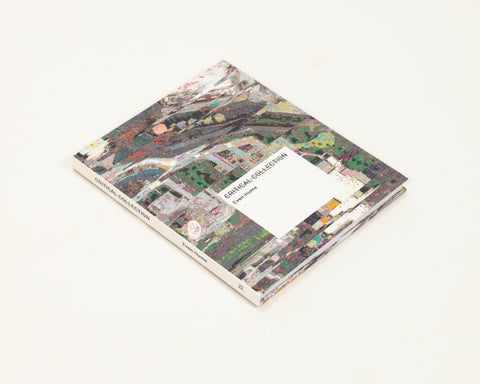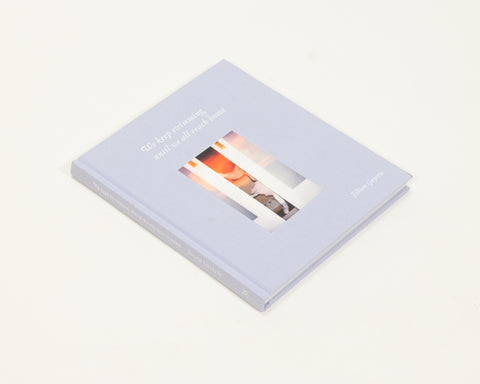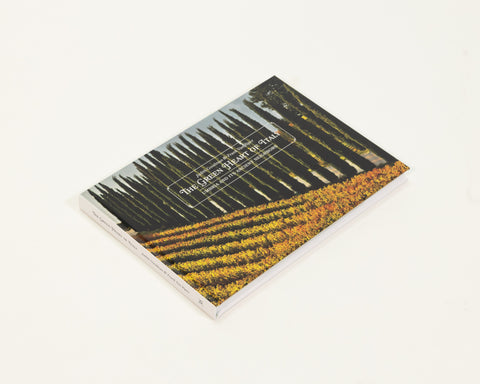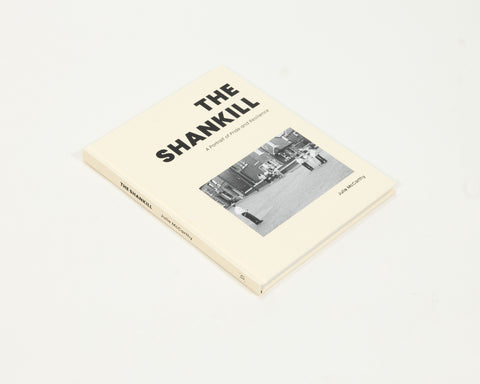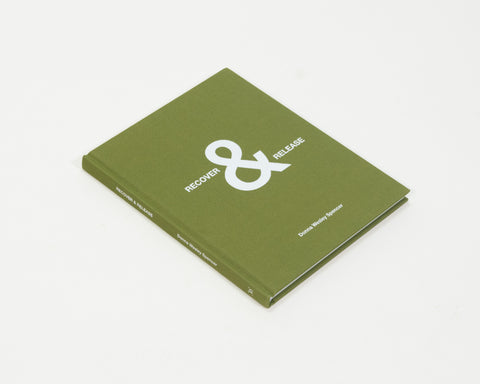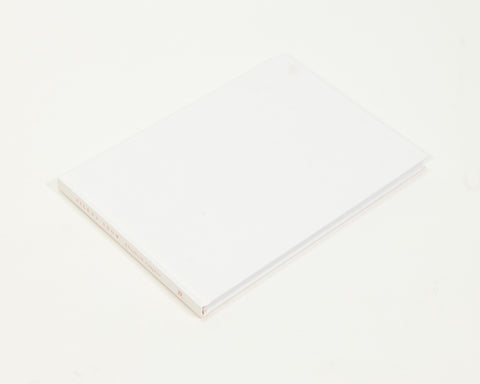 Round four of the ping-pong chats with Joerg Colberg of Conscientious centers on individual images, the impressions they leave, their power, and their uses, in the context of the ongoing Gulf oil spill.
Round four of the ping-pong chats with Joerg Colberg of Conscientious centers on individual images, the impressions they leave, their power, and their uses, in the context of the ongoing Gulf oil spill.

Dave Martin/AP

Michael Itkoff: To kick off this round I thought we might discuss a particular photograph used to illustrate the ongoing disaster in the Gulf.
Many of the images we see of the oil spill only show activity in the context of human attempts to mitigate the disaster. Alternatively we might see images where the damage has already occurred: dead or injured animals, tar balls on the beach or oil laying placidly on the water.
The photograph above conveys a sense of motion, a sense of activity still in progress. The narrative is unfolding just as the ramifications of the BP oil leak are compounding every day. The wave in the photograph represents an absolute loss of control as it carries the oil to shore and helps to disperse it around the ocean. Where is this wave going to make landfall? How can we possibly stop it? There is something fundamentally destabilizing at work here....
What do you think of this image and are there any others out there that have caught your eye?
Joerg Colberg: That's a very abstract image, and I'm a bit puzzled by it. It's not necessarily a bad photo, but is it a good news photo? I guess the problem is that - sadly! - we're used to seeing images of dead animals or of oil-covered birds, so we need something new, something that gives us new insight. But it's not clear to me whether we need any new insight at all: Don't we already know everything there is to know about this spill?

I suppose if there's one image that I think represents the spill well it's strictly speaking not a single image. It's the live feed from the ocean floor where you can see the oil spewing out as a darkish brown/black cloud. It's almost impossible to tell what it really means - you can't tell what the scales are (how big are those structures?) - but it's obvious that there's a big problem. News photographers are scrambling to find images that show the impact of the disaster, while the feed never changes (which is, of course, the bad news).
So that dark cloud not only shows the actual source of the problem, it also metaphorically stands for the dark clouds that have been gathering over the government, say - the government that, so the narrative goes, is supposed to shrink and to stop interfering with businesses but that simultaneously is supposed to somehow be able to fix such huge problems. How can this work? The obvious answer is: It doesn't, but we don't want to hear that.
Furthermore, that spilling dark cloud seems to stand for the spirits that we summoned: We have the technology to drill for oil thousands of feet down in the ocean, and we have the technology to watch everything in real time, but when things get messed up, we're literally unable to fix it.
In this context it seems the issue is what do we want the media to actually talk about and show? And how can a photographer work with that?
MI: That video feed is absolutely terrifying. The uncontrollable rush of oil and gas disorients and destabilizes in a similar way as the more aestheticized image of the wave. Both contain an irrepressible motion and a hint of the sublime.
This is interesting in relation to an earlier conversation we had regarding literal depiction vs. poetics (or something along those lines). In this case I think we agree that the more pointed the coverage the better. In both cases we also agree that a 'good' image should move the viewer in some way.
Honestly, I don't really feel like I know everything about the spill, except for what I have picked up from news reports. That may be the baseline of journalism: informing the public as events unfold. As for photographers and the media having a larger responsibility to relate micro/macro social patterns and root causes via succinct snippets I fear that may trend a bit towards the divisive polemic of most blogs and radio pundits. Sensationalism may get people riled up but it is even more successful at damaging credibility and truth. Quality long-form journalism, threatened as it is, is probably the zenith of the Fourth Estate's attempt at relating an independent perspective to a larger audience.

Eric Gay/AP
The image above shows a committed photographer, Rich Matthews, who speaks about the experience at length here. "The oil is so thick and sticky, almost like a cake batter. It does not wipe off. You have to scrape it off, in layers until you finally get close to the skin. Then you pour on some Dawn dishwashing soap and scrub. I think to myself: No fish, no bird, no turtle would ever be able to clean this off of themselves. If any animal, any were to end up in this same puddle there is almost no way they could escape."
JC: You hit the spot there, pointing out the problems we're facing right now. Essentially, we're told that the web is the future and that everybody has got to have a Facebook account, a Twitter feed, etc., but quality journalism concerning complex issues takes time. People hear about a disaster, and they expect to see something online right away. Of course, you can have immediate images (like the fire of the rig or the oil gushing or floating in the water), but anything that looks at why this has happened and what this all means is impossible to produce within 24 hours (unless you're lucky and that one journalist who has been trying to sell his previously boring background story for years now suddenly has an audience).
I'm wondering whether this non-stop flow of information is doing us good. Mind you, I love the web for what it can do. I also love coffee for what it can do. With coffee it's obvious to most people what happens if you consume too much of it. With the web less so. Of course, we live in a culture where nothing is ever our fault, so maybe we need to blame the media - and there are reasons enough to blame them for their sensationalism and shallow reporting of most issues.
I'm no psychologist, but I have the feeling that what we're currently witnessing is an exercise in learned helplessness: If you get all your information from a newspaper then you might be angry or frustrated about something just once - when you read it. But when everything gets chopped up into many small bits and you get to see these small bits one after the other, spread out across the day, you'll basically end up being constantly angry and frustrated. Since you can't do anything about what you're reading or watching, you might develop what psychologists call learned helplessness, where even when there's a way to do something you basically don't believe your choice will make a difference any longer.
I don't know where this is going, but it seems obvious to me that part of the solution still has to lie with us, regardless whether it's the oil spill or the information spill online. We are not directly responsible for either, but indirectly we are. We drive cars around the block to buy a bottle of milk, and we demand the latest news updates (the example of "live blogging" truly turns this into a total travesty) right now. This clearly is not working for anybody. It's amazing, we end up being more and more unhappy, and the media are turning ever more frantic, spewing out ever more irrelevant bullshit.
In particular, we expect too much from photographers. It's almost as if you're berating the barista at Starbucks for not serving you the coffee fast enough. Of course, I'm seeing this as someone who mostly deals with photography that is produced over long periods of time and where individual images often don't matter as much as the whole. But even just taking individual images, I think we might want to get used to the idea of seeing images that do not reveal everything right away. We might want to start spending time with images, because, clearly, processing tons and tons of images every day is not making us all smarter, is it? (coincidentally that is why I don't like stuff like The Boston Globe's "The Big Picture" that much: The photojournalistic cliches aside, it offers images for consumption. Which is fine for event like the Soccer World Cup [because, frankly, who cares?], but it's so dangerous for events like the oil spill, where things will not change unless we strongly demand they will - and take the bus instead of the car, say).

Mitch Epstein, from American Power
Let me bring up this image, which does not have anything to do directly with the spill. It's an oil pipeline in Alaska (another oil "battleground"). It's about as undramatic an image as you can imagine, I'm sure many people will find it boring; but, again, it has a large metaphorical value, because within that pristine landscape there's this man-made structure, coming out of the ground (or going into it). Why are such images not getting as much exposure as images of obvious disasters?
MI: This is a great image and I would argue it stages the dramatic conflict between man and nature in a very direct way. I almost picture this pipeline as a hypodermic needle mainlining the fossil fuel out of the wells and into a refinement plant. I am 100% in support of taking personal action to effect change. Taking responsibility and leading a conscientious lifestyle by example may inspire others to take the same approach.
As far as the steady stream of information goes I toggle back and forth between finding it overwhelming and inspiring. I do agree on the connection between consumerism's ability to instantly gratify our physical desires and the internet's ready answers. With the internet, however, we are consumers of knowledge which, as I argued before, may help dematerialize our needs and make them more sustainable. Believe it or not I look fondly back on when a research report was based on taking notes from a pile of books, not skimming the latest aggregated feed.
I think time is becoming an issue here: time invested in production of material and time invested in understanding, amalgamating and synthesizing information. Time is usually tied directly to quality although the relationship can be more complicated. The image above was obviously composed with a large format camera. Epstein took the time to haul out his equipment, find and frame the shot, wait for the right light and make the image. When speaking about photography, writing, and many other activities craft also comes into play. A photographer's ability to work technically with a camera or a writer's skills as a wordsmith will define the final product.

Bradley Kanaris/Getty Images
This photograph was probably made on a whim, in no time at all. Perhaps the photographer accidentally stepped into the tarry mess and decided to make the picture. In either case the sticky sensation, and the story it represents, is conveyed rather successfully.
JC: I'd disagree that with the internet we're consumers. We can decide to be consumers, but we can also do things differently. And that's important for me, not just in the news context, but also (and especially) in the context of photography. We can be more than just consumers. We can create contents or interact with other people - something we weren't easily be able to do in the age of television.
This might be where we can start to work on something, where we can try to deal with our frustrations. You could take Greenpeace's BP logo competition as an example. If you're a photographer, and you wanted to produce something and share it the web's right there for you.
But we've increasingly seen the web transformed into a gigantic online mall. It's all about selling and consuming now. It's infuriating. I haven't given up hope that there will be more to the web - in fact, it started out with what I call "more" now, before companies took over.
So just to come back briefly to Mitch's photo, there actually is a website dedicated to the topic, featuring the photography and more. We need to see more of those sites, and I hope more photographers will produce them.
Isn't that what the web should be all about, about all of us contributing, instead of all of us consuming?
MI: Without a doubt it is the ability to participate in the generation of content and share it instantly around the world that is the most exciting aspect of the internet. So we are not just consumers but part of a dialogue. Perhaps its an antidote to the learned helplessness you described, a way to get involved, however minimally. Ultimately its the empowering potential of the internet that most excites me and the Greenpeace campaign is a good example.
Just the other day I was thinking about the visual pollution of branding. Not just advertising billboards but the actual discrete packets of visual matter that make up a logo. The logo contains within it the aspirations of the company, it is a statement full of promise, an idealized vision without substance. The shorthand of company logos and advertising begs to be subverted by independent thinkers and outlets like Adbusters. I was staring out over the steamy cityscape of Brooklyn and the Chase logo leapt out at me from the buildings and trees.

Now I admit I have been feeling a bit down lately but it struck me how insidious this logo was. One could interpret the cyclical action in the logo as a naturally closed, sustainable system (which is most likely how it was intended - to parallel the flow of money with that of water, for example) but I could not get away from the idea of 'Chase'ing your own tail, the rat race, the maze of the city. It was such an imposition, this visual injection of an idea into my already fraught mind that it seemed like I was being indoctrinated, as if there was no escape.
So, there is no doubt that the aesthetic landscape of our world has a great effect on our psyche. Whether on a building, in a magazine or on a screen, images speak to us. The internet is just another platform (albeit democratized) upon which those with something to say can share their thoughts and engage in a dialogue. Which I guess brings us back to some fundamental questions: what to say, how to say it, to whom and why? How does a photographer take an
issue, such as the oil spill, and pick a particular way to present it?

Patrick Kelley/U.S. Coast Guard
This image, of flaring off the natural gas released by the Deepwater Horizon wellhead, reminded me of the 'Destruction' painting in Thomas Cole's epic Course of Empire. What may at once seem a stretch begins to correspond remarkably well upon closer inspection. In addition to the formal similarities (ie. the gesture and flame in the upper right) the overall tone rings true. The sun in the photograph, echoing and anchoring the man-made flames of the flare, portends either a fiery end or, possibly, the hope of renewal once the smoke has cleared. Interestingly the photographer who took the image, Patrick Kelley, is a Petty Officer in the United States Coast Guard....

Thomas Cole, The Course of Empire, Destruction, 1836
JC: I'm not sure I see the similarity, but that's the beauty of photography that it makes different people see different things.
There's an interesting question here, namely what we expect our news photographers to show. I'm increasingly under the impression that people are expecting visually exciting images. You can't have "boring" photos any longer, because boring is not exciting, and news has to be exciting. Mind you, the oil spill is exciting enough on its own...
It's interesting that whenever something major happens, there inevitably will be a debate or at least an anticipation about the one image that will stand for that event. As if all events could be simply summarized by a single image. But once we have that one image that magically seems to say what we think needs to be said you can almost feel the tension leaving: Finally, we know what's going on.
Maybe looking for that one image is the visual equivalent of finding that one sound bite that will summarize some event.
Thoughts?
MI: Certainly events tend to become compressed historically into iconic images, quotes, dates and stats but that may also be the homogenizing effect of time and memory. It does seem, however, as if the trend towards instant gratification and sensationalization extends toward photographic depiction as well.
There is something intriguing about the role images play in helping us understand reality. Slavoj Zizek's thoughts in 'Welcome to the Desert of the Real' may be relevant here. My feeling is that the static image, bound by the frame and time itself, can be a form of closure, a digestible packet of information available at our fingertips and just as easily dismissible. This may be the real secret of society's drive to demarcate history with images: first to understand, then to catalogue and preserve, and finally to dismiss and move on.
While selective memory can be dangerous it is, of course, impossible to document and remember everything. Until there is a Google camera with a live feed on every corner, most things in the world will continue to come into existence and fade before they are even recognized. On that note the Mass Observation project was a novel attempt to study the everyday lives of ordinary people in Britain by focusing the documentation efforts of citizenry inwards. This university sponsored program seemed to foreshadow some of the participatory media efforts we are finding now with the internet.
